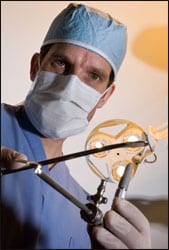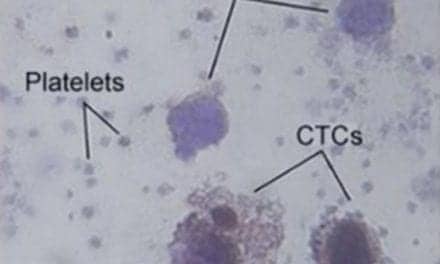Wire locators and radioactive seeds can help breast surgeons locate cancerous lesions, but each approach presents its own difficulty. For decades, breast surgeons have relied on wire localization to pinpoint tumors. But wire localization can lead to surgery delays and cancellations, unsuccessful procedures, and increased stress for patients, surgeons, and the mammography team.
Legacy localization approaches present challenges
Typically, a wire localizer is inserted during the morning of a surgical procedure. That means the patient has to be careful about dislodging it, which can heighten stress during an already stressful day. If the wire moves, the patient will need to be rerouted to the mammography department to have it reinserted. Because the mammography department likely has a full schedule, that means delays for the patient and her surgical team.
At other healthcare facilities, a breast surgeon can rely on a radioactive seed, which is approximately the size of a small sesame seed and inserted into the tumor area, to locate the lesion. Unfortunately, because the seeds contain a small amount of radiation, there are strict handling guidelines for handling them–and that means this procedure is only a good fit for certain healthcare facilities.
Wire localization can result in stress among patients
In an April 2020 presentation, Valerie Gorman, MD, FACS, a breast surgeon at Texas Breast Center in Waxahachie, explained that the localization wire is often attached using a transparent medical dressing. Inserting the wire can be an “anxiety provoking” experience for the circulating nurse, who also has to make sure they don’t pull the wire too much or cut it too short. The nurse also has to advise the patient against moving, which could cause the wire to migrate.
While Gorman explained that wire localization is a safe, cost-effective, and established procedure, one that guides a breast surgeon on the location of a patient’s tumor, the experience can also be stressful for patients.
For example, one of Gorman’s patients had a difficult experience with the wire insertion in the mammography department. Then she sat in the waiting room and pulled on a sweater after she felt cold. The act of pulling on her sweater dislodged the wire. The result was additional waiting and a delayed start to her surgery because the wire had to be reinserted.
Wireless localization enables precision and ease of use
Incorporating the LOCalizer™ Wire-free Guidance System as part of pre-surgical planning can help. Developed by Marlborough, Mass.-based Hologic, Inc., the LOCalizer is a wireless radio frequency identification (RFID) breast lesion system. It can enable precision and ease of use for breast surgery guidance.
The LOCalizer system includes:
- A miniature RFID tag with a unique ID number pre-loaded in a needle applicator
- A single-use surgical probe with a small, approximately 8 mm tip
- A portable handheld reader that can be used in a sterile (when enclosed in the system’s sterile drape) or unsterile environment
The tag is pre-loaded in the needle applicator and comes with a unique identification number, which allows the breast surgeon to locate it during the procedure; it can be inserted several days or hours before the surgical procedure. Visible under X-ray and ultrasound, the tag presents no contraindication for patients with nickel allergies, according to Hologic.
Approximately the size of a pencil, the single-use sterile probe is used by a breast surgeon to pinpoint the location of the tag during the procedure. The portable handheld reader shows the surgeon the distance to the tag in millimeters and the tag’s unique ID number on a screen whose brightness can be customized to the lighting in the surgical suite.
Review a Lumpectomy Case
Celebrating National Cancer Survivor’s Month
Sponsored by

Medqor is committed to protecting and respecting your privacy. We may contact you about our products and services or share information with sponsorship partners, as well as other content that may be of interest to you. By submitting your information, you consent to us contacting you for this purpose in accordance with our privacy policy.
For further information, please check out our privacy policy here





